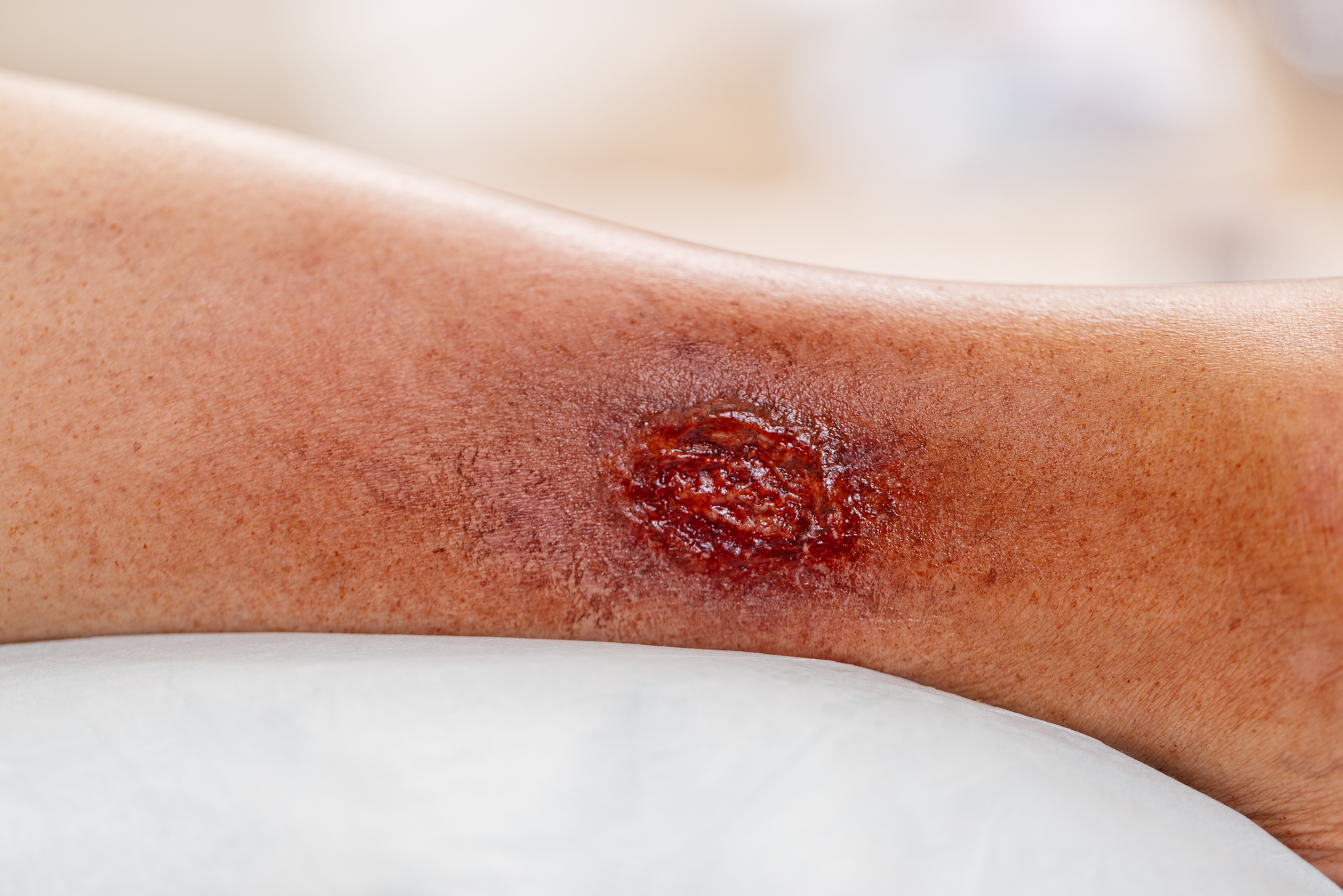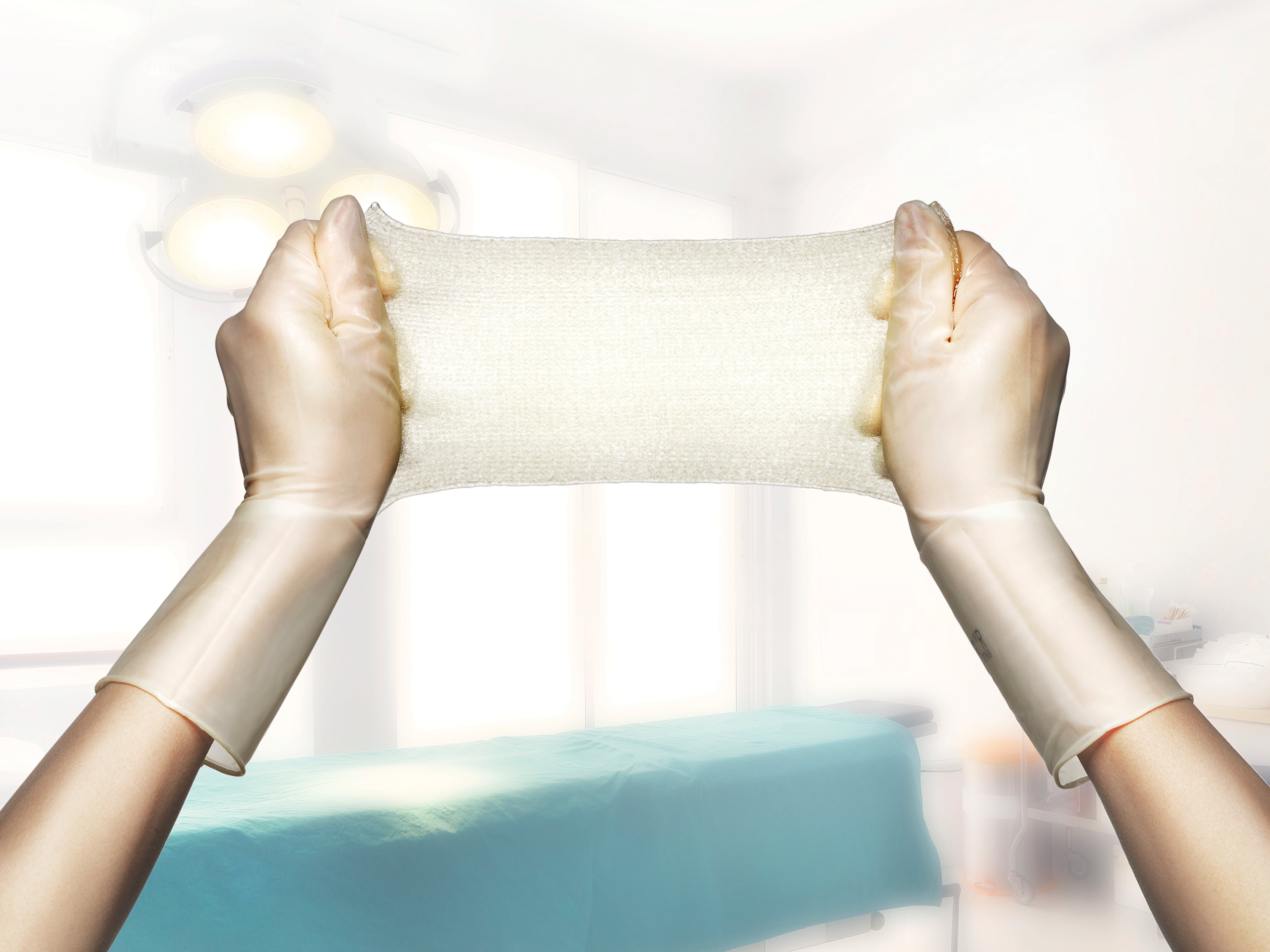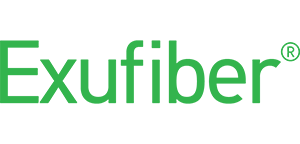Exufiber and Exufiber Ag+
Designed to be DIFFERENT
Advanced gelling fibers with a thirst for exudate.

If you could look deep inside an exudative cavity wound, you’d see the true test of gelling fiber performance – and it’s a lot more than just exudate absorption and retention. Heavy exudate demands high performance from your gelling fiber.
Exufiber is a next generation gelling fiber dressing designed specifically for the rigors of deep and highly exudative wounds. Its highly absorbent polyvinyl alcohol (PVA) fibers with Hydrolock® Technology deliver exceptional absorbency and structural integrity that fills a critical clinical need. But, Exufiber doesn’t stop there.
 Modern dressing technology that optimizes performance in the wound - where healing happens.
Modern dressing technology that optimizes performance in the wound - where healing happens.
Exufiber’s densely packed PVA fibers swell upon contact with exudate to lock exudate, blood and bacteria away from the wound1-4. Once saturated, Exufiber does something truly special. With continuous capillary action, it wicks moisture into the cover dressing even under compression and against gravity2,4. This is called transfer, and it gives Exufiber the unique ability to manage high levels of exudate flow while supporting moist wound healing.
You might be surprised by how wet your cover dressing becomes. This is evidence of transfer in action and is normal. Imagine if all that exudate stayed in the wound. Exufiber helps create an optimized wound healing environment that promotes moist wound healing. Then, when Exufiber’s work is done, it removes in one piece leaving a clean wound bed with less residue that can hinder wound healing.5,6
 The difference is material.
The difference is material.
Other dressings are constructed of carboxymethylcellulose (CMC) which is promoted for its ability to hold exudate within the dressing rather than its transfer ability. If a dressing does not transfer, what happens when it’s saturated? That exudate has to go somewhere. With Exufiber, that exudate transfers up into the cover dressing. The wound stays moist but exudate does not pool in the wound7 which can overpower wound healing. When other dressings have had their fill, Exufiber is just getting started.
You don’t have to look far to see the advantages of Exufiber’s in-wound performance.
-
Reduces the risk of leakage and maceration3
-
Supports a clean wound bed for undisturbed healing by promoting autolytic debridement, locking in exudate and staying intact during use and removal8
-
Reduces bioburden risk (Exufiber Ag+) A combination of Hydrolock Technology and silver sulfate removes wound debris that supports bacterial growth and biofilm reformation9-10
-
Superior fluid retention capability when compared to a leading competitive dressing7
-
Easy one-piece removal which may save time and potentially help enhance patient comfort11
With Exufiber, you can look for more from your gelling fiber
Educational Resources
Below are resources that show how Exufiber is the next generation gelling fiber dressing designed specifically for the rigors of deep and highly exudative wounds.
Gelling fiber: Separating fact from fiction
A close look at the features that matter most to managing chronic wound exudate
Exufiber in practice
The condition of peri-wound skin improved and diabetic foot ulcers reduced in size in a study of 21 patients treated with Exufiber.
How to use Exufiber
Instructional video showing how to apply and remove Exufiber®, a gelling fibre dressing with advanced fluid retention for highly exuding wounds.
Transfer of fluid using Exufiber in a simulated wound
Paulo Alves explains how fluid is transfered with Exufiber dressings
-
Bioventus lab test. Report PB058-004-V2. Data on file.
-
Molnlycke Health Care. Report 20181024-003. Data on file.
-
Molnlycke Health Care. Report 20200512-003. Data on file.
-
Molnlycke Health Care. Report 20181024-002. Data on file.
-
Mölnlycke Health Care, Tensile strength Exufiber Ag+, PD-521248 rev.01
-
Mölnlycke Health Care, Challenge Ag: External tests at Swerea IVF – Wet Tensile Strength, LIMS 20151127-002
-
Surgical Materials Testing Laboratory. TM-404 Free Swell Absorption and Retention. Report 20140806-001
-
Davies, P., McCarty, S., An in-use product evaluation of a gelling fibre dressing in wound management. E-poster presentation at Wounds UK Conference, 2017, Harrogate, United Kingdom
-
Davis, S. C., Li, J. , Gil, J., Head, C. , Valdes, J., Glinos, G. D., Solis, M., Higa, A. and Pastar, I., Preclinical evaluation of a novel silver gelling fiber dressing on Pseudomonas aeruginosa in a porcine wound infection model. Wound Rep Reg 2019, 27: 360-365.
-
Gil, J., Valdes, J., Solis, M., Higa, A., Parajon, F., Li, J., and Davis, S.C. Evaluation of a Gelling Fiber Dressing with Silver to Eliminate Methicillin Resistant Staphylococcus aureus (MRSA) Biofilm Infections and Enhance the Healing in Deep Partial Thickness Porcine Wound Model. Poster presented at 30th SAWC Spring meeting, San Diego 5-9 April 2017
-
Smet, S., Beele, H., Saine, L., Suys, E., Henrickx, B. Open, non-comparative, multi-centre post market clinical follow-up investigation to evaluate performance and safety on pressure ulcers when using a gelling fibre dressing as intended. Poster Presentation at European Pressure Ulcer Advisory Panel Conference, 2015, Ghent, Belgium





